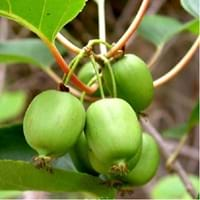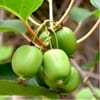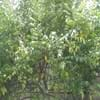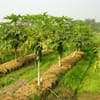Life Span
Perennial
Perennial
Origin
Eastern Asia
United States, California, Mexico
Types
Actinidia arguta, Actinidia giraldii, Actinidia hypoleuca
Standard Live Oak, Highrise Live Oak, Cathedral Live Oak
Number of Varieties
Not Available
Habitat
Dappled Shade, open Woodlands
Not Available
USDA Hardiness Zone
3-8
9-11
Sunset Zone
1a, 1b, 2a, 2b, 3a, 3b, 4, 5, 6, 7, 8, 9, 14, 15, 16, 17, 18, 19, 20
7, 8, 9, 14, 15, 16, 17, 18, 19, 20, 21, 22, 23, 24
Habit
Vining/Climbing
Spreading
Flower Color
White, Ivory
Red, Light Green
Flower Color Modifier
Bicolor
Bicolor
Fruit Color
Green, Yellow green
Tan, Brown
Leaf Color in Spring
Green, Dark Green
Green
Leaf Color in Summer
Dark Green
Dark Green
Leaf Color in Fall
Dark Green
Dark Green
Leaf Color in Winter
Light Green
Dark Green
Plant Season
Spring, Summer, Fall
Spring, Summer, Fall, Winter
Sunlight
Full Sun, Partial Sun
Full Sun, Partial Sun
Type of Soil
Loam
Clay, Loam, Sand
The pH of Soil
Neutral
Acidic, Neutral
Soil Drainage
Well drained
Well drained
Bloom Time
Spring, Late Spring, Early Summer
Early Spring
Tolerances
Shade areas
Pollution, Drought, Salt
Where to Plant?
Ground, Pot
Ground
How to Plant?
Grafting, Stem Cutting
Stem Planting, Transplanting
Plant Maintenance
Low
Low
Watering Requirements
Average Water Needs, Requires regular watering
Water Deeply
In Summer
Regular watering required
Ample Water
In Spring
Moderate
Average Water, Ample Water
In Winter
Average Water
Once a week
Soil pH
Neutral
Acidic, Neutral
Soil Type
Loam
Clay, Loam, Sand
Soil Drainage Capacity
Well drained
Well drained
Sun Exposure
Full Sun, Partial Sun
Full Sun, Partial Sun
Pruning
Remove damaged leaves, Remove dead branches, Remove dead leaves
Don't prune in the fall, Remove dead branches
Fertilizers
Apply 10-10-10 amount, fertilize twice a year
All-Purpose Liquid Fertilizer, Compost, Fertilize the first year, High-phosphorous fertilizers used
Pests and Diseases
Botrytis head rot, Japanese Beetles, Leaf Rollers, Nematodes, Phytophthora, Root rot, Sclerotinia blight, Spider mites, Thripes
Red blotch
Plant Tolerance
Shade areas
Drought, Pollution, Salt
Flowers
Showy
Insignificant
Flower Petal Number
Single
Not Available
Foliage Texture
Medium
Medium
Foliage Sheen
Glossy
Matte
Attracts
Cats
Birds, Butterflies
Allergy
Not Available
Not Available
Aesthetic Uses
Cottage Garden
Not Used For Aesthetic Purpose
Beauty Benefits
Not Available
Not Available
Environmental Uses
Shadow Tree
Air purification
Medicinal Uses
Antioxidants, Fiber, Folate, Rich in Potassium, Vitamin C
No Medicinal Use
Part of Plant Used
Fruits
Bark, Root
Other Uses
Grown for shade
Used in construction, Wood is used for making furniture
Used As Indoor Plant
No
No
Used As Outdoor Plant
Yes
Yes
Garden Design
Edible, Feature Plant, Vine
Feature Plant, Hedges, Shade Trees, Street Trees
Botanical Name
ACTINIDIA arguta
QUERCUS agrifolia
Common Name
Hardy Kiwi
California Live Oak
In Hindi
हार्डी कीवी
पुरान बलूत
In German
Hardy Kiwi
Live Oak
In Spanish
kiwi hardy
roble vivo
In Greek
σκληραγωγημένα ακτινίδια
live oak
In Portuguese
kiwi Hardy
carvalho vivo
In Polish
hardy kiwi
Live Oak
In Latin
Hardy kiwi
live quercu
Phylum
Magnoliophyta
Tracheophyta
Class
Magnoliopsida
Magnoliopsida
Family
Actinidiaceae
Fagaceae
Clade
Angiosperms, Asterids, Eudicots
Angiosperms, Eudicots, Rosids
Tribe
Not Available
Not Available
Subfamily
Actinidiaceae
Not Available
Number of Species
Not Available
Not Available
Season and Care of Hardy Kiwi and Live Oak
Season and care of Hardy Kiwi and Live Oak is important to know. While considering everything about Hardy Kiwi and Live Oak Care, growing season is an essential factor. Hardy Kiwi season is Spring, Summer and Fall and Live Oak season is Spring, Summer and Fall. The type of soil for Hardy Kiwi is Loam and for Live Oak is Clay, Loam, Sand while the PH of soil for Hardy Kiwi is Neutral and for Live Oak is Acidic, Neutral.
Hardy Kiwi and Live Oak Physical Information
Hardy Kiwi and Live Oak physical information is very important for comparison. Hardy Kiwi height is 550.00 cm and width 90.00 cm whereas Live Oak height is 610.00 cm and width 1,220.00 cm. The color specification of Hardy Kiwi and Live Oak are as follows:
Hardy Kiwi flower color: White and Ivory
Hardy Kiwi leaf color: Green and Dark Green
Live Oak flower color: Red and Light Green
- Live Oak leaf color: Green
Care of Hardy Kiwi and Live Oak
Care of Hardy Kiwi and Live Oak include pruning, fertilizers, watering etc. Hardy Kiwi pruning is done Remove damaged leaves, Remove dead branches and Remove dead leaves and Live Oak pruning is done Don't prune in the fall and Remove dead branches. In summer Hardy Kiwi needs Regular watering required and in winter, it needs Average Water. Whereas, in summer Live Oak needs Ample Water and in winter, it needs Once a week.





